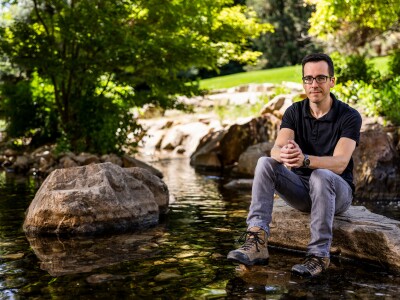A new study by researchers at LDS Hospital in Salt Lake City shows that patients with acute carbon monoxide poisoning are significantly less likely to suffer long-term neurological and cognitive problems that can impair memory and concentration skills if they are treated promptly with highly-pressurized oxygen in a hyperbaric chamber.
Results of the comprehensive study, which examined optimal treatment methods to reduce long-term cognitive effects in patients exposed to carbon monoxide, are published in today's issue of The New England Journal of Medicine.
Ramona O. Hopkins is one of the study's coauthors and a Brigham Young University assistant professor of psychology and neuroscience. She is also a senior research associate in pulmonary and critical care medicine at LDS Hospital.
"What's exciting about this study is that we found that the hyperbaric oxygen reduced the cognitive problems among people who have experienced carbon monoxide poisoning," said Hopkins.
The randomized, double-blind study of 152 carbon monoxide poisoning patients treated at LDS Hospital between November 1992 and February 1999 found that hyperbaric-oxygen therapy, in which patients were administered 100 percent oxygen in an enclosed chamber at pressure two to three times greater than normal sea level pressure, reduced the frequency of cognitive problems in patients by nearly 50 percent six weeks after they were poisoned. Benefits of hyperbaric oxygen therapy were also measurable a year later. Researchers found that 12 months after being poisoned, hyperbaric-oxygen patients experienced significantly fewer long-term cognitive problems than patients given regular oxygen through a facemask.
Results were so overwhelming that researchers stopped the clinical trial early, according to Lindell K. Weaver, MD, of the LDS Hospital Critical Care Division and principal investigator of the study.
The findings are significant since carbon monoxide is the leading cause of death by poisoning in the United States. Each year more than 40,000 Americans - including some 400 Utahns - are treated for carbon monoxide poisoning in hospital emergency departments, where regular oxygen is the most common mode of therapy.
Carbon monoxide is produced by the incomplete combustion of carbon-based fuel. Furnaces are the most common sources of poisonings, however hot water heaters, space heaters, engines, some cooking stoves and lamps also produce carbon monoxide and can be sources of poisonings. Carbon monoxide essentially kills by suffocation, robbing the body's red blood cells of vital oxygen molecules. Researchers say that patients undergoing hyperbaric oxygen therapy benefit from greater amounts of the high-pressurized oxygen that is immediately dissolved into the bloodstream and delivered to the body tissues in amounts sufficient to promote healing. The benefit comes from the breathing of the oxygen under pressure, not from the oxygen being in direct contact with the skin.
Carbon monoxide has been dubbed the silent killer since it is odorless, tasteless, and colorless. As temperatures fall and furnaces are fired up, more Americans are at risk for carbon monoxide poisoning.
Members of the LDS Hospital research team include: Dr. Weaver; Ramona O. Hopkins, PhD; Karen J. Chan, BS; Susan Churchill, NP; C. Gregory Elliott, MD; Terry P. Clemmer, MD; James F. Orme, Jr., MD; Frank O. Thomas, MD; and Alan H. Morris, MD. Dr. Hopkins is also a faculty member of the Department of Psychology at Brigham Young University.
"We certainly hope this paper will have an impact," said Hopkins. "I hope that it happens quickly, particularly when we're approaching winter when people start using their furnaces."
Portions of this release are provided courtesy of LDS Hospital in Salt Lake City.




